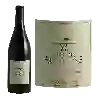Top 100 red wines of Pic-Saint-Loup
Discover the top 100 best red wines of Pic-Saint-Loup of Languedoc as well as the best winemakers in the region. Explore the varietals of the red wines that are popular of Pic-Saint-Loup and the best vintages to taste in this region.



































































































